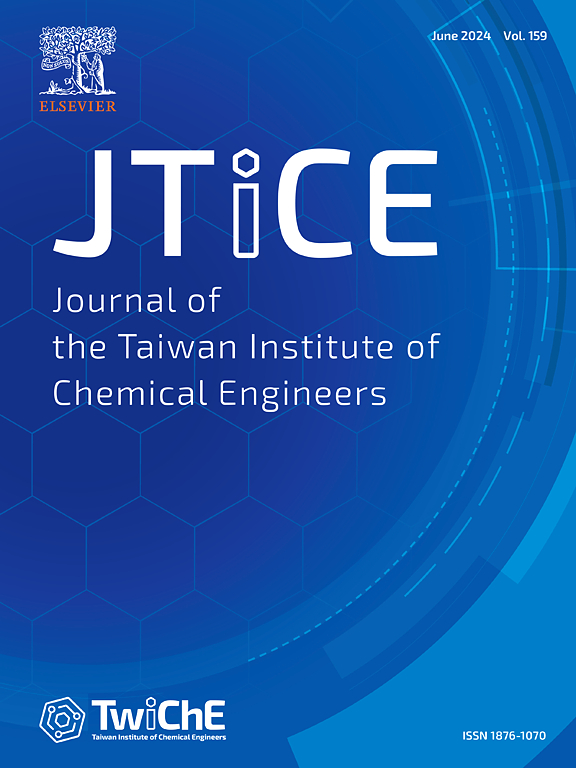基于误差修正模型的格兰杰因果分析在非平稳工业过程中的根本原因诊断
IF 5.5
3区 工程技术
Q1 ENGINEERING, CHEMICAL
Journal of the Taiwan Institute of Chemical Engineers
Pub Date : 2025-07-15
DOI:10.1016/j.jtice.2025.106288
引用次数: 0
摘要
多变量时间序列在故障发生后通常会出现非平稳特征。然而,现有的基于granger的根本原因诊断(RCD)方法难以解决这些特征带来的挑战。方法为了克服这一局限性,提出了一种基于格兰杰因果关系的方法,该方法集成了协整分析的误差修正模型。该方法首先对非平稳多元时间序列进行Johansen协整分析,验证它们之间是否存在协整关系。为了避免虚假回归,在全格兰杰模型和简化格兰杰模型中,每个变量根据其积分顺序进行差分。由于差异会模糊长期关系,我们用协整分析重新捕捉它们,并添加一个误差校正项,用于测量前一时期偏离均衡的情况。然后,我们对结果的预测残差进行格兰杰因果关系显著性测试,得出故障传播的可靠因果图。通过数值模拟、基准田纳西伊士曼过程和涉及煤炭输送机电机故障的实际案例,证明了该方法的有效性。这些实例说明了该方法在复杂工业过程故障诊断中的鲁棒性和适用性。本文章由计算机程序翻译,如有差异,请以英文原文为准。

Granger causality analysis using error correction model for root cause diagnosis in non-stationary industrial processes
Background
Non-stationary characteristics commonly arise in multivariate time series after faults occur. However, existing Granger-based root cause diagnosis (RCD) methods struggle to address the challenges posed by such characteristics.
Methods
To overcome this limitation, a novel Granger causality-based method integrating an error correction model derived from cointegration analysis has been developed. The approach begins with Johansen cointegration analysis on the non-stationary multivariate time series to verify whether there is a cointegration relationship among them. To avoid spurious regression, each variable in the full and reduced Granger models is differenced according to its integration order. Because differencing can obscure long-run relationships, we recapture them with cointegration analysis and add an error-correction term that measures departures from equilibrium in the previous period. We then test the resulting prediction residuals for Granger causality significance, yielding a reliable causal diagram of the fault propagation.
Significant findings
The proposed method’s effectiveness is demonstrated through a numerical simulation, the benchmark Tennessee Eastman process, and a real-world case involving a coal conveyor motor fault. These examples illustrate its robustness and applicability in diagnosing faults in complex industrial processes.
求助全文
通过发布文献求助,成功后即可免费获取论文全文。
去求助
来源期刊
CiteScore
9.10
自引率
14.00%
发文量
362
审稿时长
35 days
期刊介绍:
Journal of the Taiwan Institute of Chemical Engineers (formerly known as Journal of the Chinese Institute of Chemical Engineers) publishes original works, from fundamental principles to practical applications, in the broad field of chemical engineering with special focus on three aspects: Chemical and Biomolecular Science and Technology, Energy and Environmental Science and Technology, and Materials Science and Technology. Authors should choose for their manuscript an appropriate aspect section and a few related classifications when submitting to the journal online.

 求助内容:
求助内容: 应助结果提醒方式:
应助结果提醒方式:


